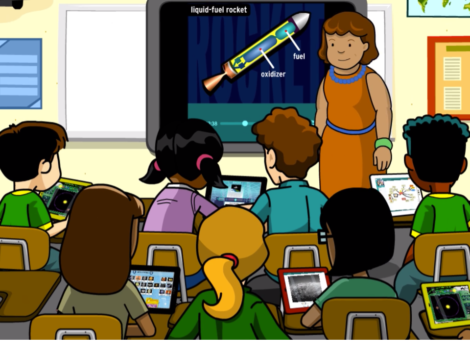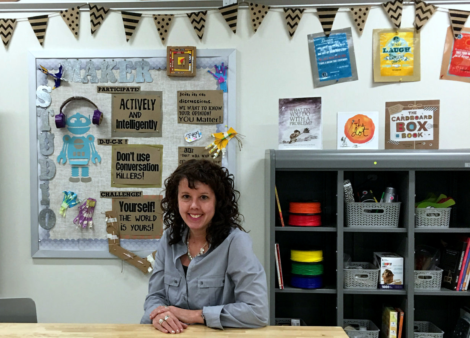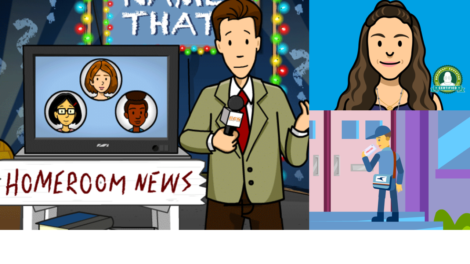
Student Choice and Differentiation
Posted by cemignano on
Guest blogger and Certified BrainPOP Educator Tina Hackey joins us to share her passion for differentiated learning and student choice. Read on to learn how Tina found her way into education from her background in Computer Science, and how BrainPOP has been an important tool for providing differentiation and student choice within her classroom.
We are in February, the month of LOVE, otherwise known as the home stretch before high-stakes testing in public education. This blog is about differentiation in an educational world of standardization.
First, a little background. I am not an education major. My BS is in Computer Science. When my third child entered kindergarten in 2006, I decided that I wanted to have the same schedule as my three school-aged children. That is when my journey as an educator began.
Great idea, but I needed a job. One of my teacher friends tried to help me prep for an interview for half-time technology specialist and half-time 4th grade teacher — the perfect combination for a computer nerd like me with no experience in the classroom on the other side of the desk. She threw a couple of likely interview questions at me and my answers were pretty good until she asked, “What would differentiation look like in your classroom?” Differentiation? What’s that?
Back when I was in school (you know, the Stone Ages—Fred Flintstone and I hitched a ride on the same Brontosaurus) all 30 or so kids sat at their desks receiving the knowledge imparted upon us by the teacher in the front of the room. We completed our worksheets, practiced our facts, and eagerly awaited the moment when the teacher would open the backdoor to the class so we could play. I don’t think she ever stepped out of the classroom to monitor us. Ahhh, those were the days. There was no “differentiation.” I would finish my work early then get to go to a lower grade to help those kids, or I could go to the mimeograph and make copies for the teacher. Oh, the fumes, the glorious fumes…what was I talking about again???
I found out what “differentiation” meant, said what I had to say at the interview to get the job, all the while knowing that there would be none of that new fangled differentiation in my class. My students would learn the same tried-and-true way that I had learned all of those years ago. If it was good enough for me, it would be good enough for them!
Fast forward a few weeks. I was the newbie, so by default I was the one who had to take the ELL Certification Test because no one else wanted to do it. There I was, a new teacher without a teaching degree, with 5 ELL students, a couple of students repeating 4th grade, three gifted kids, two on ESE consult, plus the others who made up my class of 22 students.
Only a week or so into the year, I was conducting my math lesson the only way I knew how: as the sage on the stage. The lesson began with a review. The problem showed 2 quarters and asked for the students to show another way to represent the same value, so I called upon a student. Silence. I rephrased, “Let’s start with identifying the value shown”. The student replied, “Seventy-four cents???” That was my epiphany.
I already knew that my whole-group approach wasn’t working for my 5 ELL students. My gifted students were busy counting ceiling tiles or sleeping off their boredom. Was I reaching anyone? From that moment forward, I vowed to not waste anymore of their time nor mine. I would learn how to differentiate.
What does this story have to do with BrainPOP? Keep reading and you will discover the answer…
I had access to BrainPOP back then, but those were the movie and quiz days. Still an awesome resource, but not really differentiation-friendly. And the Activities? Print that out for super sub plan material!
Fast forward again to January 2015 at FETC. I attended a BrainPOP Classroom session and found out about individual accounts. BAM! I had a tool with which the students were already familiar that now had the ability to be assigned individually. That was BrainPOP in its differentiation infancy. Then came customizable quizzes, Make-a-Map, GameUp with SnapThought, Make-a-Movie, and now Creative Coding (not to mention Challenge, Newsela, and Related Reading—AKA FYI). Differentiation AND student choice in showing subject comprehension? Mind. Blown.
The idea of offering student choice in showing mastery can be scary. Why? For educators like me in states like Florida that base pay and performance evaluations on the results of standardized multiple-choice tests, we need to know that our students can perform well on these types of assessments. But after well over a decade of “teaching to the test”, research has shown that student needs are NOT being met by preparing them this way. Genuine engagement in learning must occur. Learning is not a passive verb. We must provide authentic, relevant educational experiences for our students. BrainPOP gives teachers an opportunity to provide differentiated lessons and student choice in a SAFE platform. How sweet is that?
Now if only I could convince the powers that be to end standardized tests. If not end them, stop tying so much to the performance of a child on one test. Alas, that is the subject of another blog altogether.














